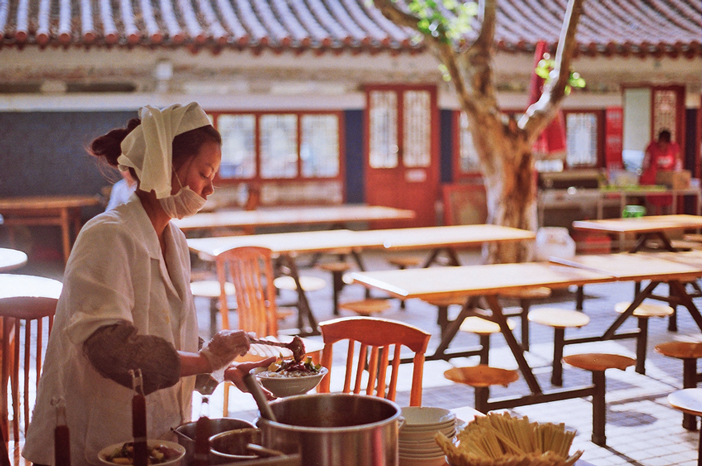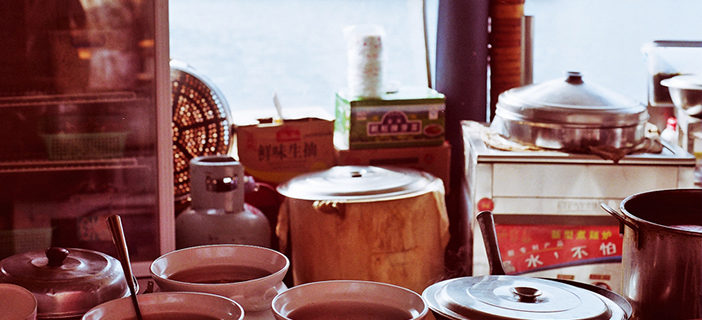“Yummy, this is the best Austrian dish I’ve ever had,” my Chinese husband proclaims, complimenting me on my soup-making skills. This is a sincere compliment from a person who has mastered the art of Chinese criticism after being criticized a few times daily for the last 35 years (read: all his life). He’s usually tunes the criticism down when he’s with me, my exclamation “if you ever talk to me the way you talk to your parents” still echoing in his head. It still is a sincere compliment because he certainly does not go overboard with compliments on my cooking. But I digress.
The Universal Appeal of Soup
The soup I cooked was a simple bone broth soup. After making “real” soup with Austrian friends in Vienna years ago as a student, I have come to appreciate the savory simplicity that is homemade soup. “Do you never cook in accordance with the Five Elements,” my soup-cooking friend asked incredulously. I didn’t, but you don’t need to study the Five Elements to make a good soup. Traditionally, having soup simmer on the stove was just as common a sight in Austria’s kitchens as it was in China’s kitchens. Eating soup spans all different countries and countless generations.
 There’s no better time to eat soup than this time of the year. Soup is the perfect dish to leave you feeling warm on the inside. Not only that, bone broth soup is actually really healthy. According to this article, eating bone broth soup not only protects your joints and makes your bones stronger; it also helps with leaky gut, makes you look younger, enhances sleep and memory, boosts your immune system, and gives you more energy.
There’s no better time to eat soup than this time of the year. Soup is the perfect dish to leave you feeling warm on the inside. Not only that, bone broth soup is actually really healthy. According to this article, eating bone broth soup not only protects your joints and makes your bones stronger; it also helps with leaky gut, makes you look younger, enhances sleep and memory, boosts your immune system, and gives you more energy.
Use cut bones…
In Austria, I use cut beef bones, onions, yellow and orange carrots, celery root, parsnips, a few bulbs of garlic, and a piece of ginger. I roast the bones in a little oil until just before they turn brown, add the cut veggies, roast until everything’s a light brown color, and add water. Once the soup has come to a boil, I reduce the heat and let simmer for at least half a day, sometimes one, sometimes two days, adding cold water when necessary. I strain and keep the soup. I then add whatever vegetables I like to the soup, cook, and add a little salt at the end.
…or one single bone
 Since I can’t get all the above ingredients in China, I have to adjust a little. We always buy one whole bone at the market (our market only has whole bones, but they usually chop them in half for us) and use a gigantic pot for cooking. Instead of beef bones, you can also use sheep or chicken bones (or a whole chicken if you can’t find bones only). Add onions, carrots, celery sticks, garlic and ginger. I then cook it just like I would in Austria. Since one bone makes for a lot of soup, I strain the soup, put on the stove again and let simmer until it’s reduced to only an oily rest. I let it cool and put it into ice cube molds in the freezer. This way, I can prepare soup fast whenever I feel like it.
Since I can’t get all the above ingredients in China, I have to adjust a little. We always buy one whole bone at the market (our market only has whole bones, but they usually chop them in half for us) and use a gigantic pot for cooking. Instead of beef bones, you can also use sheep or chicken bones (or a whole chicken if you can’t find bones only). Add onions, carrots, celery sticks, garlic and ginger. I then cook it just like I would in Austria. Since one bone makes for a lot of soup, I strain the soup, put on the stove again and let simmer until it’s reduced to only an oily rest. I let it cool and put it into ice cube molds in the freezer. This way, I can prepare soup fast whenever I feel like it.
It’s versatile!
My toddler son loves drinking soup. Bone broth soup is very versatile. You can eat it with veggies or noodles, make cream soup adding tomatoes or pumpkin, or just drink it as a side dish. Homemade soup is delicious and healthy–no MSG, no palm oil, only fresh ingredients–and the perfect dish to bridge cultures at the dinner table.
Photos courtesy of Ruth Silbermayr-Song
Ruth Silbermayr-Song is an Austrian illustrator, German teacher and mother of two. She writes about life in China as a foreign woman, her cross-cultural marriage to a Chinese man, and child rearing bridging cultures and languages on her blog China Elevator Stories. Her story of pregnancy and parenting in China has appeared in the anthology “Knocked Up Abroad Again”.




